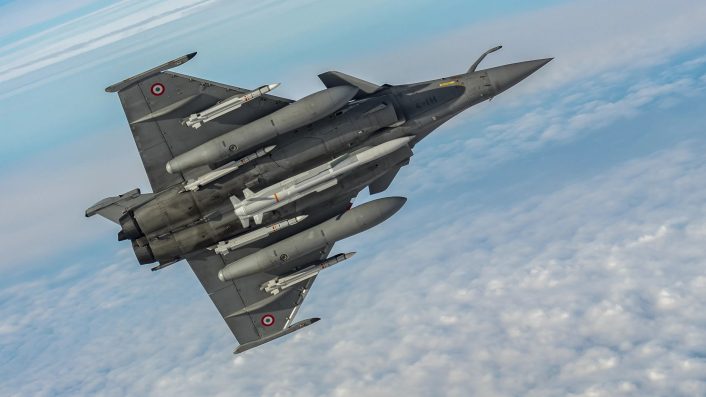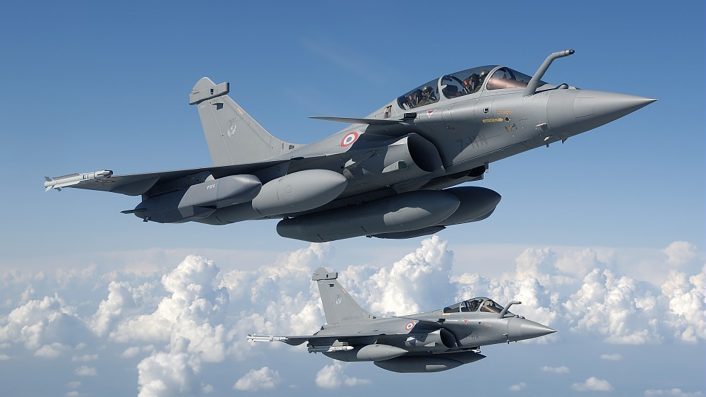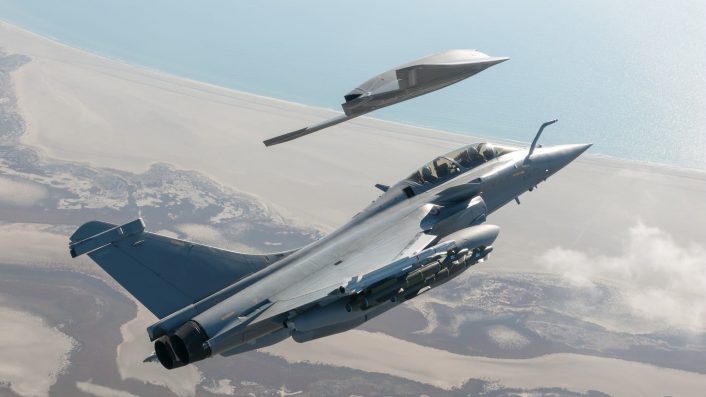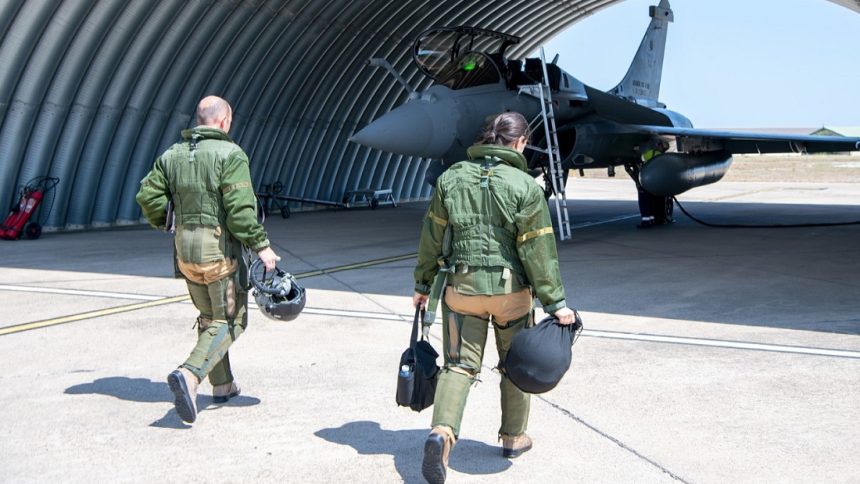Preparing for the future of the Rafale, France conducted a test campaign to assess the current state of the F4.3 standard ahead of its final definition.
The French Directorate General of Armaments (DGA) announced that the new Rafale F4.3 standard has been assessed during a short test campaign to evaluate the current state of its development. As part of the campaign, the aircraft were flown in operationally relevant scenarios, with a particular focus on connectivity and weapons.
F4.3 testing
Multiple agencies cooperated for the tests, including the DGA, the French Air and Space Force with its Military Air Expertise Center (CEAM), and the French Navy with its Naval Aeronautics Practical Experimentation and Reception Center (CEPA). Additionally, Dassault, Thales and MBDA also participated.
In total, seven missions were flown during the campaign, including scenarios in the air-to-air, air-to-ground and air-to-sea domains. Multiple assets were involved in the large-scale evaluation, including:
- Four Rafales in the role of “blue air” conducting the test mission;
- Up to four aircraft in “red air” role;
- The Horizon-class air defense frigate Chevalier Paul;
- An E-2C Hawkeye;
- A SAMP-T Mamba air defense system;
- An E-3F AWACS and an A330 MRTT Phénix tanker.
These missions allowed to collect data for a performance assessment of the Rafale F4.3 standard, which will be used to inform the continuation of the development. Among the capabilities of the new F4.3 standard will be the new MICA NG air-to-air missiles, an upgraded SPECTRA Electronic Warfare suite, the communication system CONTACT and the TALIOS targeting pod upgraded with AI algorithms.
The evolution of the Rafale as part of the F4 variant includes three subvariants, with the F4.3 being the last before the announced F5. Here is an overview of the F4’s subvariants.

Rafale F4.1
The F4.1 standard marks the first major step in the Rafale’s F4 upgrade roadmap, officially qualified by the French Direction Générale de l’Armement (DGA) in March 2023. This standard is focused on enhancing connectivity, sensor fusion, and operational capabilities, particularly in contested and network-centric environments.
The Rafale F4.1 introduces significant software and hardware enhancements, aimed at improving the aircraft’s multi-role versatility and survivability against modern threats. A key component is the integration of the TALIOS (TArgeting Long-range Identification Optronic System) targeting pod, replacing the older Damocles.
New capabilities were also introduced for the RBE2 AESA radar and the SPECTRA electronic warfare suite. The Helmet-Mounted Display was a long-waited capability for the Rafale, which was finally introduced on the F4.1 with the Thales Scorpion.
The F4.1 standard is currently being fielded by the French Air and Space Force and Navy, with almost all aircraft now upgraded to this standard.

Rafale F4.2
The F4.2 standard builds upon the capabilities introduced in the F4.1, with a focus on deepening the aircraft’s integration in connected combat systems and improving sensor interoperability, data fusion, and AI-assisted operations. This is considered a crucial step in preparing the Rafale for the highly networked future battlespace and collaborative combat.
Among the new features are satellite communications (SATCOM), the introduction of the Link 16 Block 2, the TRAGEDAC and CAPOEIRA (Connectivité améliorée pour les évolutions du Rafale, Enhanced connectivity for the evolution of the Rafale) systems. These systems will allow the Rafale to receive data from other aircraft in flight for passive targeting.
The upgrades allow Rafale to operate more effectively in multi-domain operations, combining air, land, sea, cyber, and space inputs into a single operational picture. Upgrades to the TALIOS targeting pod and the OSF (Optronique secteur frontal/ frontal sector optronics) will further improve the targeting capabilities.
The F4.2 standard is not yet qualified, although it is expected to happen in the second half of the 2020s, and will be introduced on new-build aircraft as well as retrofitted into existing Rafales. Meanwhile, work is already ongoing on the F4.3 standard.

Rafale F4.3
The F4.3 standard represents the final incremental step in the F4 upgrade cycle and acts as a transitional configuration between F4 and the future F5 standard. The latter should coincide with the introduction of manned-unmanned teaming and next-generation sensors and weapons.
While fewer public details are available compared to F4.1 and F4.2, F4.3 is expected to mature and refine the combat cloud and collaborative capabilities introduced in earlier phases. Among the few known capabilities of the new F4.3 standard will be the new MICA NG air-to-air missiles, an upgraded SPECTRA Electronic Warfare suite, the communication system CONTACT and the TALIOS targeting pod upgraded with AI algorithms.
With F5 meant to act as a “bridge” towards the introduction of the FCAS/SCAF next generation aircraft, advanced networking and sensor coordination might be another focus. A date for the introduction in service is not available but, with F5 set to be introduced around 2030, it is reasonable to believe F4.3 will be fielded in the late 2020s.









